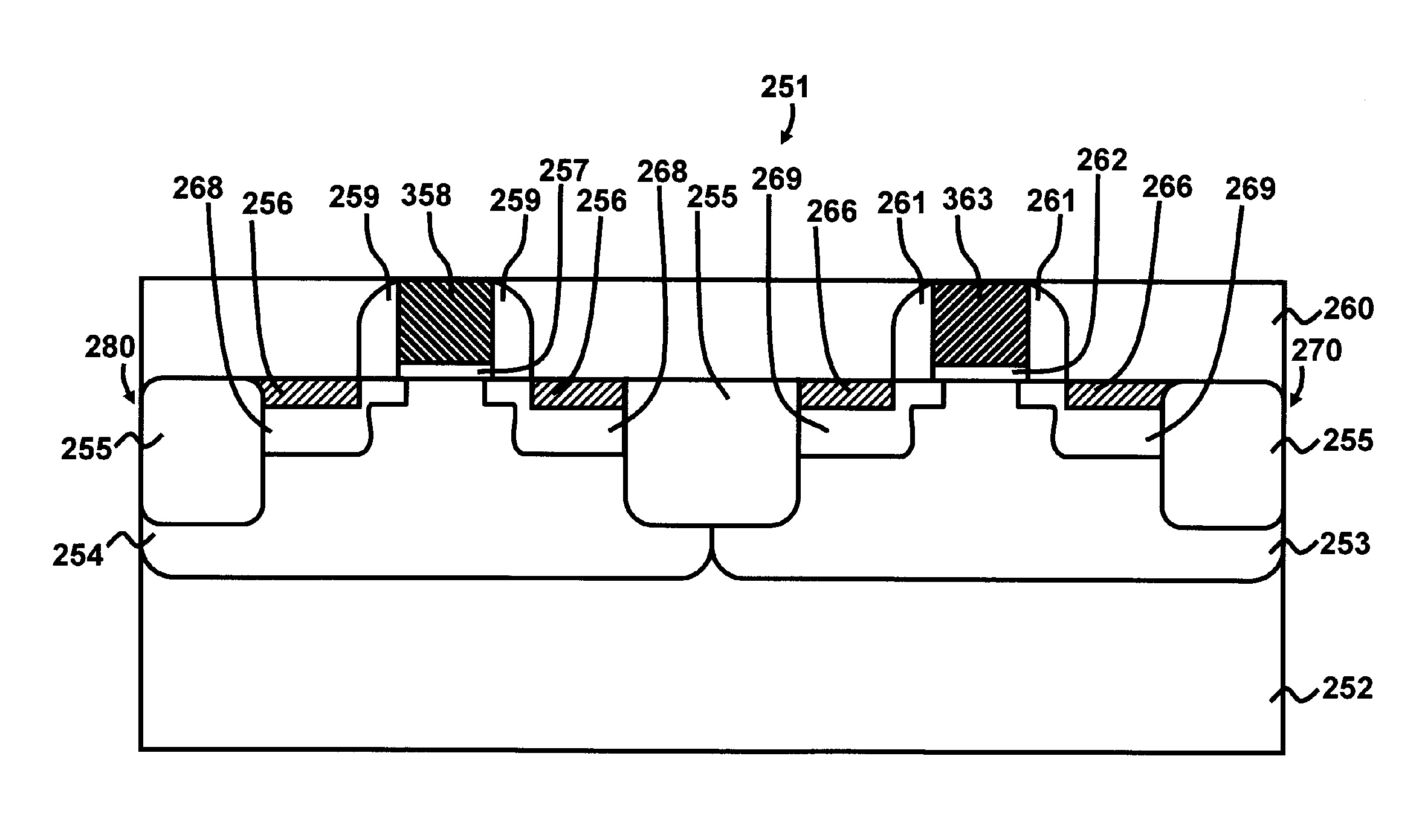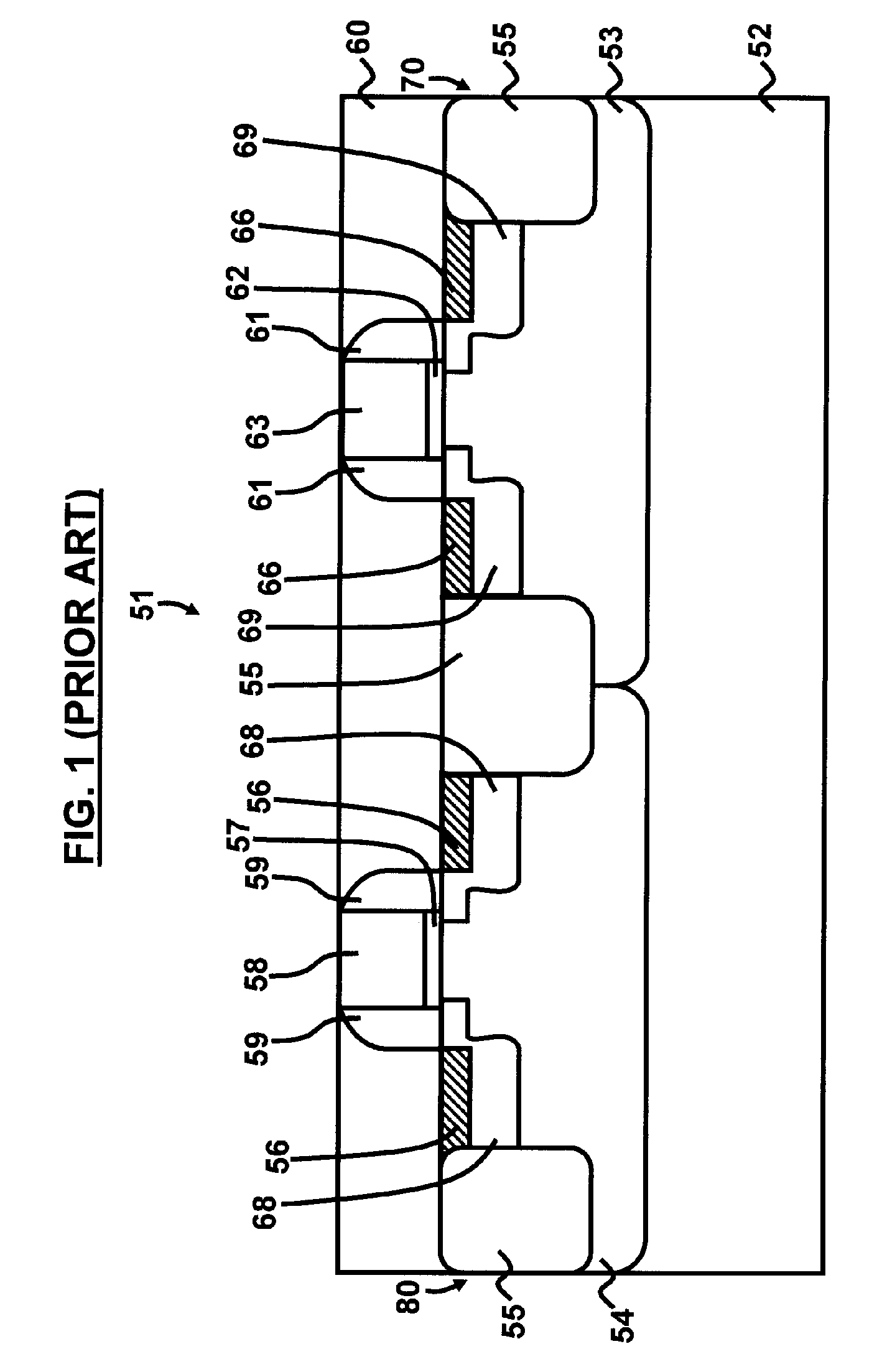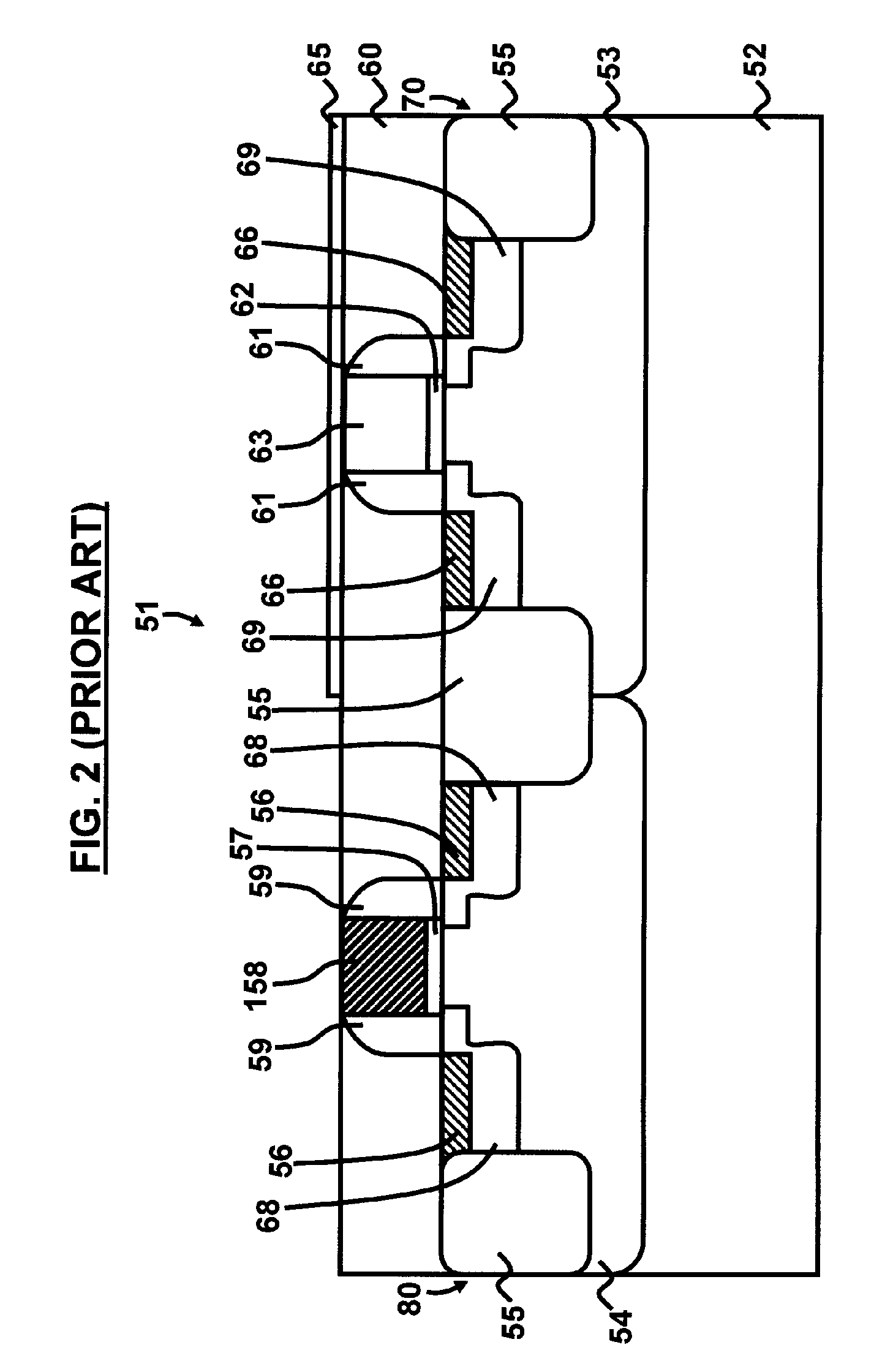Method for forming self-aligned dual fully silicided gates in CMOS devices
a technology of fully silicided gates and cmos, which is applied in the direction of semiconductor devices, electrical equipment, basic electric elements, etc., can solve the problems of significant cmos technology challenge, misalignment, and device performance degradation, so as to simplify the dual salicide formation process, reduce the required lithography level, and eliminate the effect of misalignmen
- Summary
- Abstract
- Description
- Claims
- Application Information
AI Technical Summary
Benefits of technology
Problems solved by technology
Method used
Image
Examples
first embodiment
[0037]Moreover, the dual FUSI gate formation process provided by the invention is performed with only one lithography patterning and etching process having to be performed on the silicide blocking film 265. As such, a second blocking film is unnecessary, which is contrary to the conventional approaches, thus there is no need for a second patterning process. Moreover, because there is only one patterning process needed, there is no misalignment problem, thereby overcoming the aforementioned misalignment problem often found in conventional methods.
[0038]While the above description and accompanying drawings indicate that the NFET region 280 undergoes the self-aligned FUSI gate formation process first, the embodiments of the invention are not limited to such a sequence. Rather, the PFET region 270 could equally and just as optimally undergo the self-aligned FUSI gate formation process first, and the embodiments of the invention are not limited to any particular sequence. In fact, it is ...
second embodiment
[0039]FIGS. 10 through 14 illustrate iterative steps of fabricating a dual FUSI gate CMOS device 451 according to the invention. As illustrated in FIG. 10, the CMOS device 451 comprises a NFET region 480 comprising a Pwell 454 formed in a substrate 452 with NFET source / drain implant regions 468, formed in the Pwell 454, with a NFET gate dielectric 457, preferably comprising any of oxide, nitridated oxide, or a high-k material, formed over the Pwell 454, and with a NFET gate 458 formed over the gate dielectric 457. A pair of insulative sidewalls 459, preferably comprising any of oxide, nitride, or oxynitride, is also formed around the NFET gate 458. Additionally, shallow trench isolation regions 455 are also included in the CMOS device 451 to provide electrical isolation between various devices in the CMOS device 451.
[0040]In one embodiment, the substrate 452 comprises a single-crystal silicon layer. Alternatively, the substrate 452 may comprise any appropriate semiconducting materia...
PUM
 Login to View More
Login to View More Abstract
Description
Claims
Application Information
 Login to View More
Login to View More - R&D
- Intellectual Property
- Life Sciences
- Materials
- Tech Scout
- Unparalleled Data Quality
- Higher Quality Content
- 60% Fewer Hallucinations
Browse by: Latest US Patents, China's latest patents, Technical Efficacy Thesaurus, Application Domain, Technology Topic, Popular Technical Reports.
© 2025 PatSnap. All rights reserved.Legal|Privacy policy|Modern Slavery Act Transparency Statement|Sitemap|About US| Contact US: help@patsnap.com



